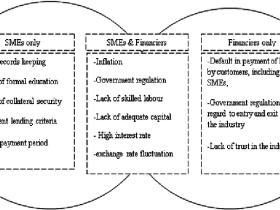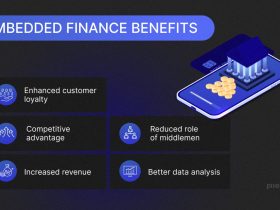With the rapid advancements in technology, digital transformation has become a top priority for many industries, including credit unions. These financial institutions, traditionally known for their personalized and community-focused approach, are now embracing digital technologies to enhance their services and stay competitive in the digital age. In this article, we will explore how credit unions are approaching digital transformation and the benefits it brings to both the institutions and their members.
The Digital Shift in Credit Unions
Historically, credit unions have relied on face-to-face interactions and paper-based processes to serve their customers. However, as more and more consumers are turning to digital channels for their financial needs, credit unions are acknowledging the need to adapt and transform their operations.
1. Embracing Online Banking: To keep up with the growing demand for online banking services, credit unions are investing in user-friendly and secure digital platforms. These platforms allow members to check their account balances, transfer funds, pay bills, and even apply for loans from the comfort of their homes or on the go.
2. Introducing Mobile Apps: Mobile apps have become an indispensable tool for financial institutions, and credit unions are no exception. By developing intuitive and feature-rich mobile apps, credit unions enable their members to conduct their banking transactions whenever and wherever they want. This not only enhances member experience but also helps credit unions attract younger and tech-savvy members.
3. Enhancing Personalization: One of the key advantages credit unions have over larger banks is their ability to offer personalized services to their members. With digital transformation, credit unions are leveraging data analytics and artificial intelligence to better understand member preferences and deliver tailored recommendations and offers. This personalized approach not only strengthens member relationships but also increases customer loyalty.
4. Improving Digital Security: As digital transactions increase, ensuring the security of member data and funds becomes paramount. Credit unions are leveraging advanced security measures such as multi-factor authentication, biometric verification, and robust encryption protocols to protect their members’ information and prevent fraudulent activities. By prioritizing digital security, credit unions build trust and instill confidence in their members.
The Benefits of Digital Transformation for Credit Unions
The adoption of digital technologies brings a multitude of benefits for credit unions:
1. Increased Member Satisfaction: By offering convenient and user-friendly digital banking services, credit unions can provide their members with a seamless and hassle-free experience. This, in turn, leads to higher member satisfaction and retention rates.
2. Enhanced Operational Efficiency: Digital transformation streamlines credit union operations by automating routine processes, reducing paperwork, and minimizing manual errors. This allows credit unions to allocate their resources more effectively, resulting in improved productivity and cost savings.
3. Expanded Reach and Market Penetration: With the emergence of digital channels, credit unions can expand their reach beyond their traditional geographic boundaries and attract members from different locations. This opens up new growth opportunities and enables credit unions to serve a wider customer base.
4. Improved Data Analytics: Digital platforms generate vast amounts of data, offering credit unions valuable insights into member preferences, spending patterns, and financial needs. By leveraging data analytics tools, credit unions can make informed business decisions, develop targeted marketing campaigns, and tailor their offerings to better meet member expectations.
5. Competitive Edge: By embracing digital transformation, credit unions can differentiate themselves from their competitors and position themselves as innovative and customer-centric financial institutions. This not only attracts new members but also helps retain existing ones in an increasingly competitive market.
Conclusion
Digital transformation has become essential for credit unions’ survival in today’s digital era. By implementing online banking, mobile apps, personalization, and advanced security measures, credit unions can provide their members with a superior banking experience while remaining true to their cooperative and community-oriented values. The benefits of digital transformation are vast, ranging from increased member satisfaction and operational efficiency to expanded market reach and improved data analytics. Credit unions that embrace digital technologies will not only thrive in the digital age but also strengthen their position as trusted financial partners for their members.








Leave a Reply